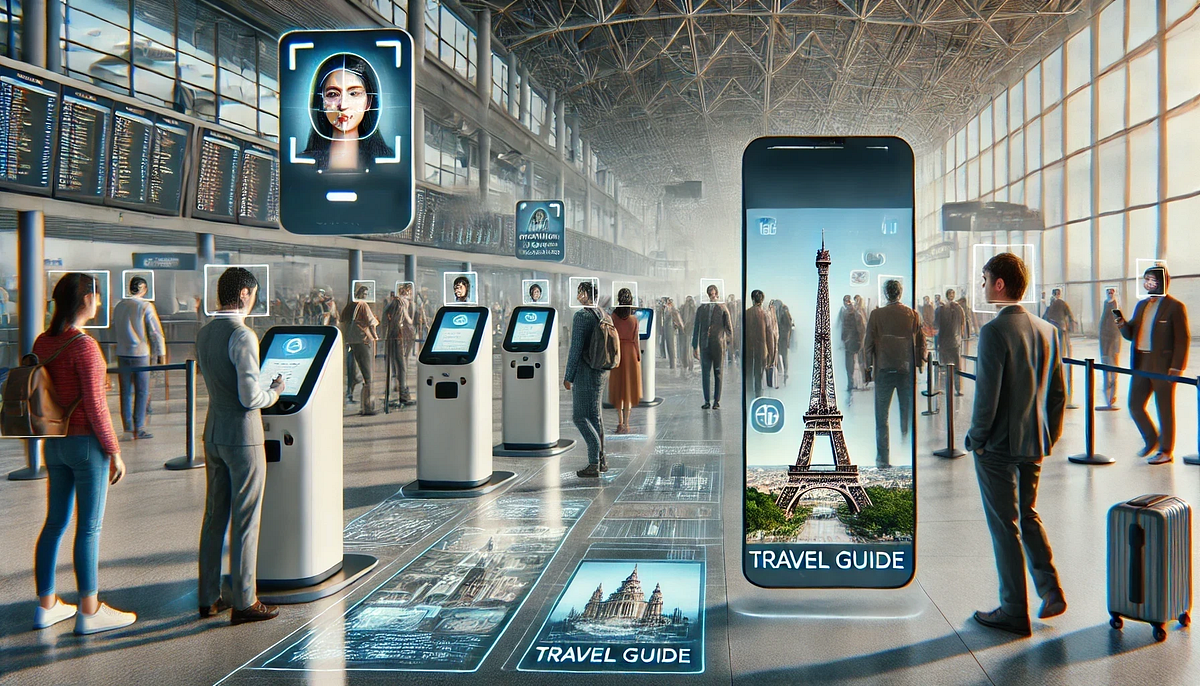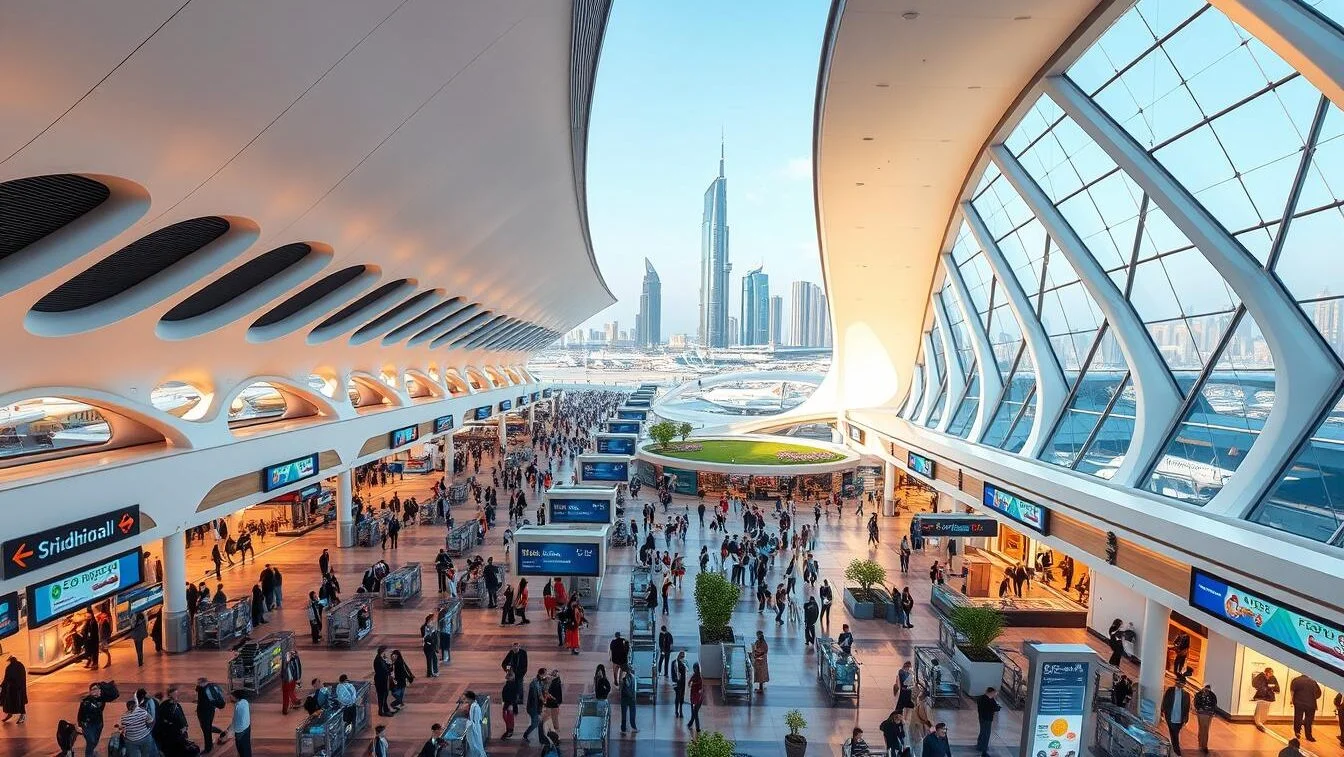Travel Tech Innovations are revolutionizing air travel in 2025, making long queues, lost baggage, and paper boarding passes things of the past. With advancements like facial recognition at check-in and autonomous baggage handling, AI is streamlining every step of the journey, delivering a faster, smarter, and more seamless airport experience. In this post, we explore how smart airports and AI-powered tools are redefining the flying experience making travel smoother, safer, and surprisingly effortless.
1. AI Check-ins: No More Waiting in Line with Travel Tech Innovations

The days of waiting in long check-in queues are over. In 2025, many major airports have introduced AI-powered self-service kiosks and mobile apps that verify your identity in seconds.
Features of AI Check-ins:
-
Facial recognition matches you to your passport
-
Instant baggage drop with weight sensors
-
Real-time flight updates and rebooking through chatbots
-
Voice-activated travel assistance
With AI now handling check-ins and document verification, travelers enjoy a faster and touch-free experience.
2. Biometric Security: A Faster, Safer Process with Travel Tech Innovations

Security lines have traditionally been the biggest bottleneck at airports. But in 2025, biometric authentication powered by AI has changed everything.
What’s New:
-
Fingerprint and facial scans instead of physical documents
-
Predictive threat detection using AI-based pattern recognition
-
Real-time passenger screening that adjusts security based on risk profiles
-
Contactless walk-through security gates
This technology not only speeds things up but also enhances safety by identifying anomalies that traditional methods may miss.
3. Smart Baggage Handling: Tracking in Real-Time
Lost luggage is becoming rare in smart airports. Thanks to AI and IoT sensors, passengers can now track their bags in real time via mobile apps.
Benefits:
-
RFID tags linked to your boarding pass
-
AI-powered route optimization to prevent mishandling
-
Automated baggage carts that deliver bags to the correct terminal
-
Push notifications on your phone about your bag’s location
With this system, you always know where your luggage is—before you even land.
4. AI in Immigration and Customs

Passing through immigration and customs has also become a smarter process. AI and machine learning now help speed up identity verification and reduce wait times.
How It Works:
-
e-Gates use facial and iris recognition
-
AI scans travel history to flag unusual patterns
-
Electronic customs declarations via mobile apps
-
Automatic approval or routing to manual checks based on risk analysis
This results in quicker processing and improved border security at global airports.
5. AI Concierge & Virtual Assistance with Travel Tech Innovations
AI-driven digital concierges are now common in modern airports, offering real-time help to travelers via voice commands, chat, or touchscreens.
What They Can Do:
-
Guide you to your gate or lounge
-
Suggest nearby food options or duty-free deals
-
Translate languages on the go
-
Offer updates on boarding, weather, and traffic delays
These AI tools act like personal travel assistants—always available, multilingual, and incredibly helpful.
6. Autonomous Transport & Smart Navigation
Navigating busy airports is no longer a headache. In 2025, smart terminals are integrated with autonomous transport systems like self-driving shuttles and robotic porters.
Conveniences Include:
-
AI-powered golf carts that drive you to your gate
-
Mobile navigation with indoor GPS
-
Smart elevators that know your destination
-
Augmented reality overlays for terminal directions
This tech ensures you get where you’re going with less stress—and no missed flights.
7. AI-Personalized Airport Experience
One of the biggest leaps in airport tech is personalization. AI uses your travel history, preferences, and even biometric data to tailor your airport experience.
Expect Things Like:
-
Curated lounge access suggestions
-
Personalized shopping offers pushed to your phone
-
Smart gates that greet you by name
-
Seamless transition from check-in to boarding
By making your journey uniquely tailored, AI takes the stress out of flying.
Why Airports Are Investing in AI in 2025
The global travel rebound has made innovation essential. By integrating AI at every stage, airports are improving efficiency, reducing staffing pressures, and creating safer, more pleasant passenger experiences.
Key Reasons Behind the Shift:
-
Surge in global travel post-pandemic
-
Labor shortages and automation needs
-
Passenger demand for faster, seamless service
-
Enhanced data security and contactless solutions
Conclusion
From check-in to touchdown, flying in 2025 is no longer the chaotic experience it used to be. Thanks to AI and the modernization of airports, travelers now enjoy smooth, efficient, and even enjoyable journeys.
As technology continues to evolve, the smart airports of today may soon feel as futuristic as spaceports. But one thing is clear—AI is at the heart of the new travel era.


